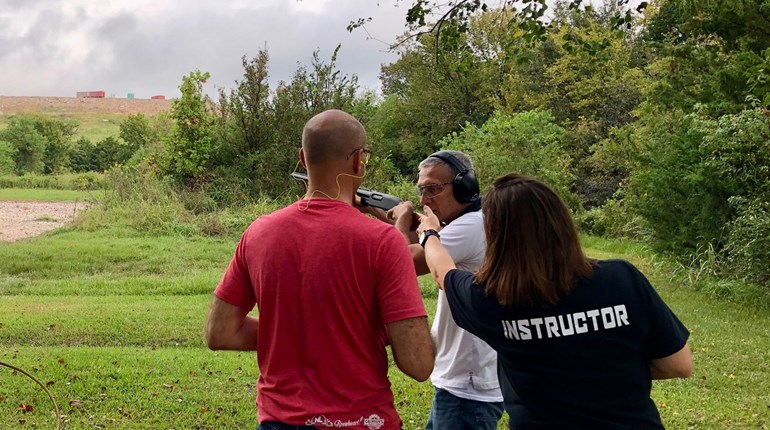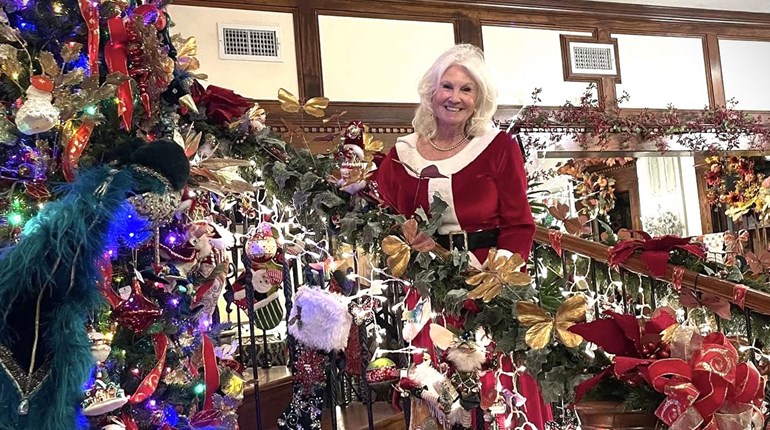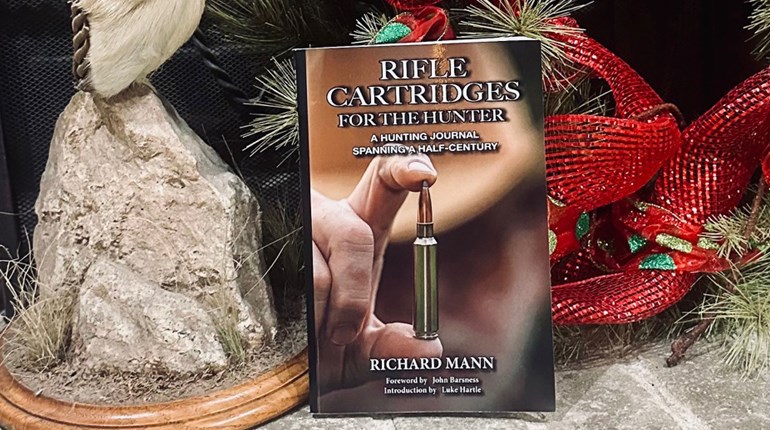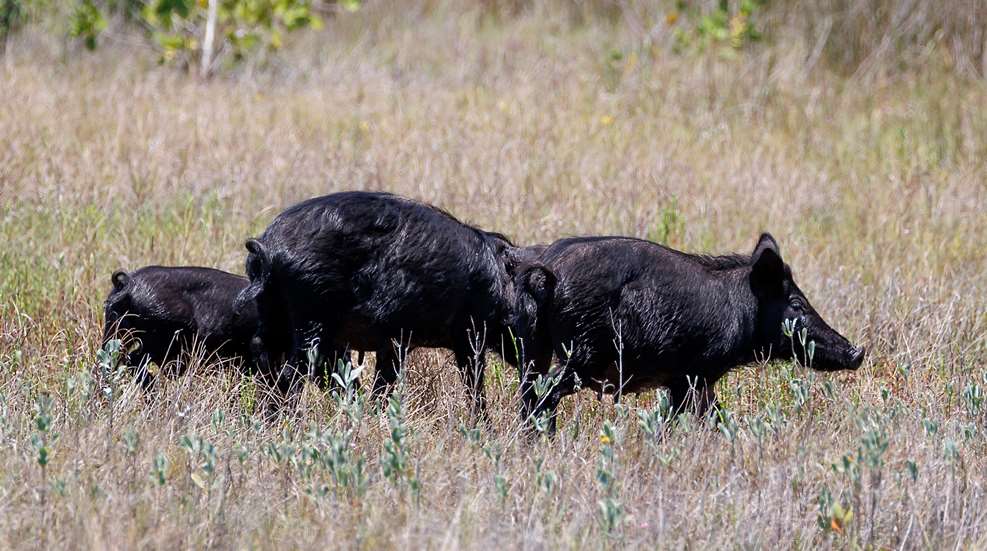
Feral hogs are considered an invasive species. There are an estimated 9 million hogs nationwide doing about $2.5 billion worth of damage annually. The reason why feral hogs are such a problem is because of how fast they reproduce. Sows can breed as young as 3 months of age. They can breed 2 to 3 times a year and have up to 14 piglets per litter. They come into “season” every 18 to 24 days and can have a litter any month of the year.
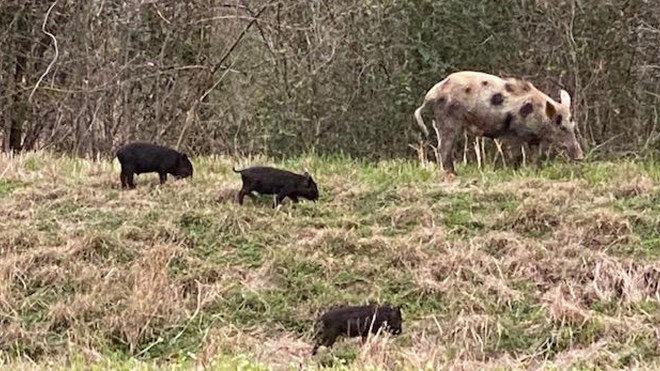
To add to their prolific ability, feral hogs are some of the smartest creatures in the animal kingdom. They are as smart as a dog, and some cognitive tests show that they are as intelligent as chimpanzees. These are some reasons that feral hogs are difficult to eradicate. Just ask any landowner or rancher that has these pests on their property
Feral hogs are public enemy number one! Some states, such as Texas, do not even require a hunting license to hunt them. Feral hogs are hunted by nearly every method possible, including with thermal imaging, and even from helicopters. Yet their numbers are still on the rise. If you hunt them during the day, they become nocturnal. If you hunt them at night, they find an area with less hunting. As soon as you relax hunting pressure as they seemingly have disappeared from your property … they come back! It is a never-ending problem.
With so many hogs, you would think that every time you head to the field, you can count on bagging a hog. It is just the opposite. Feral hogs can be very hard to find and hunt. Their sense of smell is second to none. On a windless day, hogs can detect a scent up to 8-miles away. It is hard to sneak up on an animal with a nose that is as keen and clever as a dog. Lastly, a feral hog can hear a whisper at 100 yards and a normal voice level up to a quarter mile. It does not take a hog long to associate the human scent and sounds with danger.
As smart as feral hogs are, we are smarter! We can use their keen senses against them to put a pig in the pot.
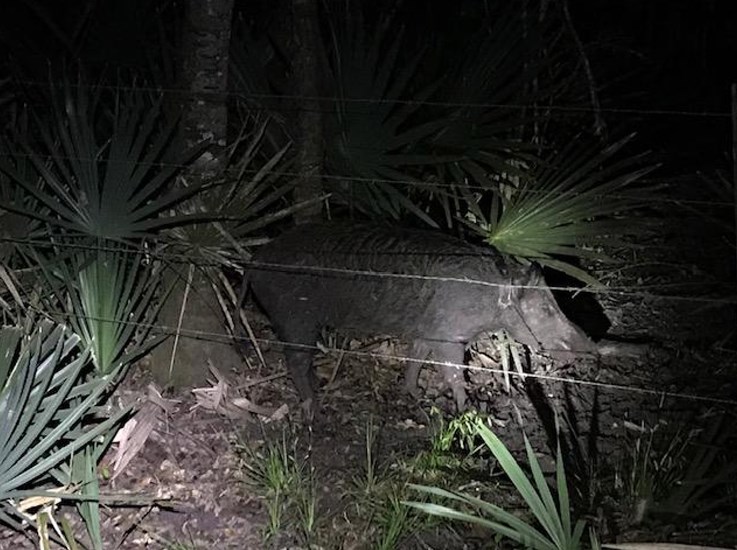
Bait
A pig’s nose is used for two things—finding food and detecting danger. Feral hogs can hardly resist a foul-smelling feast. The nastier the smell, the better it tastes to Señor Swine! Get creative when baiting feral hogs to increase your chances of success.
Sour corn is one of the best baits that you can use to attract feral hogs. It is also very easy to make if you can tolerate the smell! Place 50 lbs. of whole shelled corn in a bucket, then cover the corn with water. Let the mixture sit for 6 to 8 days to sour. The mixture can be sweetened with dog food, fruit drink powder, gelatin powder (they seem to love cherry flavored Jell-O powder), molasses, sugar, anise oil, or any other tasty morsel.
There is more to making a sour mash in baiting feral hogs. Pigs use their noses to find buried food such as roots, insects, or anything else they can dig up. Truffle hunters use pigs to find these tasty, high-dollar treats because of their ability to sniff out underground food.
When you place your sour corn mixture out to attract feral hogs, you need to maximize the scent in the air. First, you need to take 1/3 of the soured corn and bury it at least 1 to 2 feet deep. This keeps them busy while you take aim. Second, scatter 1/3 of the soured corn on the ground. This keeps them in the area until they sniff out the buried bait. Third, the remaining 1/3 of the bait should be hung in a burlap sack from a limb above the rest of the bait. The burlap sack allows the scent of the bait to waft in the wind and any liquid drips onto the ground.
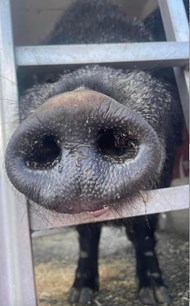
Masking Scents
As mentioned earlier, a pig’s nose is used for finding food and detecting danger. A feral hog correctly associates the human scent with danger. I have witnessed a feral hog use its powerful sense of smell to root out danger. A hog left the brush about 300 yards upwind and, in a fast trot, circled my blind. With its nose high in the air, this hog continued circling the blind I was in until it was downwind. As soon as the hog caught my scent, it was gone!
To combat this, use a masking scent. A masking scent is used to cover another scent. I like to use skunk essence to mask my scent. Skunk essence is just what it sounds like—pure skunk spray. By placing it on a limb or on the ground downwind from my blind, I can hide my scent. Just beware if the wind direction changes!
Many masking scents can be purchased from trapping supply companies. These scents are not sold as masking scents but rather, as baits. The stronger baits can be used as something that can mask human scents.
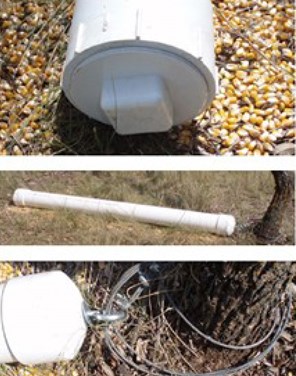
Masking Noises
Do not forget about the feral hog’s keen sense of hearing. If they pick up any unnatural noises, they take off for the hills. There are two ways you can hide human noises from the pig’s ear: Remain perfectly still and quiet, or help the pig make masking noises to drown your noises out.
You can do this by constructing a “hog log.” A hog log is made by taking a 2-foot x 6-inch diameter PVC drain pipe and drilling ¾” holes in it. The holes are made along the length of the 2-foot section about 2 inches apart. Do this on three sides of the pipe. Next, put 6-inch caps on either end. On one end drill a hole in the center of the cap and put an eye bolt through it with the eye on the outside. To use, take one cap off and fill up about ¾ of the PVC pipe with corn. Replace the cap and tie a rope through the eye, and attach the other end of the rope to a tree or long stake.
The hog log works by making noise when the feral hog is trying to get the corn. As the pig rolls the pipe to get the corn to fall out it makes enough noise to hopefully mask any noise you make in the blind.
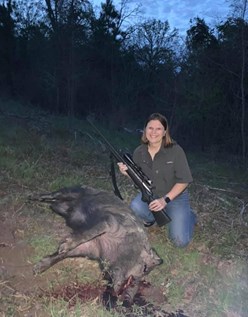
Attracting Scents
Feral hogs are attracted to petroleum products. If there are creosote poles, such as telephone or power lines on a property with hogs, you will find rub marks all around the base. In some instances, whole poles are pushed over. Ranches are convinced that they do this to get the creosote on their bodies to get rid of parasites such as fleas and ticks.
It would be impossible to carry a telephone pole everywhere you intend to hunt feral hogs, but you can surely use the same concept when hunting. Many hog hunters swear by using kerosene-soaked rags. Trappers like to hang these kerosene-soaked rags in their traps to entice hogs to enter. Hunters tie these rags to trees or hang them above the ground.
I hunted under kerosene-soaked rags and was surprised by how effective it was. With the rags hanging about 2 to 3 feet off the ground, feral hogs will walk under them, dragging them across their backs. The hogs were so occupied by rubbing against the kerosene-soaked rags, they never knew what hit them!












